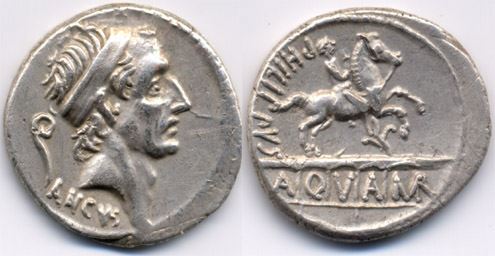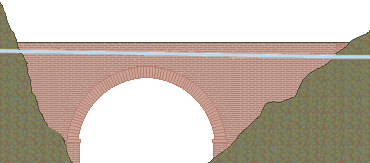[ITA:]
Sin dalle sue origini, Roma ha considerato l’acqua come la sua più importante risorsa. Complessivamente, gli undici acquedotti di Roma antica erano in grado di soddisfare un fabbisogno pro capite pari circa al doppio di quello odierno. Lo scopo di questa cache è non solamente quello di farvi conoscere uno dei più importanti acquedotti di Roma ma soprattutto le caratteristiche della sua acqua. Le coordinate vi condurranno ad una famosa fontanella sul Colle Capitolino e che può essere considerata un’importante testimonianza di questo antico acquedotto, come si può vedere dalla scritta ivi incisa. L’acquedotto dell’Acqua Marcia, che da oltre venti secoli porta nella Città Eterna un’acqua di ottima qualità e purezza, tanto da essere addirittura citata dallo storico Plinio il Vecchio nella suo trattato naturalistico Naturalis Historia” come “Clarissima aquarum omnium in toto orbe frigoris salubritatisque palma praeconio urbis Marcia est, inter reliqua deum munera urbi tributa”. (trad.: La migliore acqua del mondo per freddo e sanità, a testimonianza di tutta Roma, è l'Acqua Marcia, tra gli altri doni degli dei concessa a Roma) C. Plinii Secundi, Naturalis Historiae, Liber XXXI, XXIV, 41. L’acquedotto ancora oggi funzionante, fu costruito nel 144 a.C. in età repubblicana, prende il suo nome dal pretore (Quintus Marcius Rex) che lo fece edificare dietro ordine del Senato al costo di 180 milioni di sesterzi (approssimativamente 350 milioni di Euro attuali). La sua importanza fu tale da essere addirittura commemorato (unico caso del genere) in un denario repubblicano nel 56 a.C. in cui si può notare, nel rovescio, l’acquedotto con sotto gli archi la scritta, in forma contratta “AQVAMAR” (MAR in monogramma - vedi foto)

Il percorso origina nell’alta valle dell’Aniene per giungere, dopo circa 62 miglia romane – 91 km – fino al Campidoglio nel pieno centro di Roma, l’acqua è particolarmente ricca di calcio e per questo si classifica come “acqua dura”. Con una portata di 2.250 litri d’acqua al secondo, in un territorio urbano con densità di popolazione di circa 600.000 abitanti (nel II secolo a. C.) e di circa 1.500.000 nella sua massima espansione demografica (durante l’impero), l'Acqua Marcia alimentava ben nove dei quattordici distretti urbani della città nonché i due più importanti complessi termali di Roma: le Terme di Caracalla e le immense terme di Diocleziano. L’abilità architettonica dei romani nella costruzione dell’acquedotto Marcio consentì loro di superare agevolmente le discontinuità geologiche ed orografiche del territorio grazie all’edificazione di complesse strutture ingegneristiche. L’acquedotto segue infatti un percorso in parte sotterraneo (per circa 80 km), ed in parte sopraelevato (per i rimanenti 11 km circa). Al fine di garantire un flusso costante e per eliminare le impurità, si usavano vasche di depurazione (piscinae limariae), dove l’acqua rallentava e si decantava, consentendo così al fango e alle altre particelle di depositarsi. Le vasche si trovavano ad intervalli regolari lungo tutto il percorso dell’acquedotto. La pendenza (di circa il 2%) era pressoché uniforme per tutto il tragitto e l’acqua, anche grazie alle vasche di depurazione, procedeva a velocità costante spinta dalla sola forza di gravità.


Un altro interessante motivo, per cui i romani decisero di portare a Roma un’acqua a forte componente calcarea si ritrova nelle sue caratteristiche mineralogiche. L’acqua marcia, come detto, è un’acqua dura, in cui il calcare si ritrova disciolto sotto forma di bicarbonato di calcio – Ca(HCo3)2. Aumentando la temperatura dell’acqua attraverso un semplice procedimento di riscaldamento, si ottiene la scissione della relativa molecola e l’ottenimento della calcite (carbonato di calcio), secondo la seguente equazione chimica:
Ca(HCO3)2 ---> CaCO3 + CO2 + H2O
L’introduzione dell’acqua marcia (fortemente calcarea in quanto ricca di bicarbonato di calcio) ed il suo cospicuo utilizzo, apportava quindi direttamente a Roma, proprio grazie all’elevato potere solvente dell’acqua, il più importante legante utilizzato nell’edilizia urbana: la calce il cui utilizzo in edilizia fino all’avvento del cemento, come lo conosciamo noi, era di fondamentale importanza.
Possiamo dunque oggi ritenere che, parte delle meraviglie architettoniche di Roma siano state realizzate anche grazie all’apporto dato da questa importante risorsa di cui Roma, altrimenti, sarebbe stata priva.
Attualmente, l’acqua giunge parzialmente demineralizzata, grazie a complessi procedimenti di filtraggio.
Per prendere questa Earthcache dovete mandarmi via e-mail le risposte alle seguenti domande:
per favore non inserite le risposte nel log ma solo la foto
1. come si chiamano le formazioni calcaree naturali, di solito presenti nelle grotte, che si generano dall'evaporazione dell'acqua dura?
2. qual è la portata quotidiana dell’acquedotto espressa in metri cubi?
3. qual’è il valore teorico della pendenza dell’acquedotto espresso in gradi sessagesimali (0°-360°)?
4. che differenza c’è tra durezza temporanea e durezza permanente dell’acqua?
Poi dovete farvi una foto con il vostro GPS, da mettere sul log, con sullo sfondo la fontanella.
--------------------------------------
[ENG:]
Since the beginning, Rome considered water as his main resource. Altogether the eleven Roman aqueducts were capable to fill a per head water demand almost twice than nowadays. This cache wants to let you know something about one of the most important aqueducts in Rome and especially its water specific features. Coordinates will bring you to a famous drinking fountain in Capitol Hill that could be considered an important evidence of this ancient aqueduct, as you can see by the engraved script. The Acqua Marcia aqueduct which from twenty centuries brings into the Eternal City such a very good quality and pure water that was even noticed by Plinius the Elder in his encyclopedia Naturalis Historia as “Clarissima aquarum omnium in toto orbe frigoris salubritatisque palma praeconio urbis Marcia est, inter reliqua deum munera urbi tributa” (trans.: “The first prize for the coolest and most wholesome water in the whole world has been awarded by the voice of Rome to the Aqua Marcia, one of the gods’ gifts to our city”) C. Plinii Secundi, Naturalis Historiae, Liber XXXI, XXIV, 41. The aqueduct, still working nowadays, has been built in 144 b. C, during republican age, his name origins from the praetor (Qiuntus Marcius Rex) who built it by Senate’s command at the cost of 180 million sesterties (approximately 350 million Euro of actual value). The aqueduct was such important that has been celebrated (unique case) on a current coin of the late republican age, a denarius minted in 56 b.C. in which can be seen on the reverse the aqueduct and within the arches the inscription “AQVAMAR” (letters MAR in monogram – see picture).

The course begins in Aniene’s (a Tiber feeder) high valley, till the end, after 62 roman miles – about 91 kilometres, in Capitol Hill in the very Rome’s downtown. The water is particularly full of calcium and for that is classified as “hard water”. With his rate of flow of 2.250 litres per second, in an urban area with 600.000 inhabitants (during II century b.C.) up to 1.500.000 in the full increase (during the Empire), Marcius acqueduct was feeding up to nine of all the fourteen urban districts and also the two most important, roman thermal baths: Baths of Caracalla and the Baths of Diocletian. Even due to the construction of complexes frames and structures, Romans architectural skill in building the Marcius aqueduct let them easily clear the hurdles of ground geological and orographical roughness. The aqueduct follows an 81 kilometres underground course and for the rest 11 kilometres it runs on a raised structure. In order to provide a constant flow and even to eliminate impurities there were used purification pools (piscinae limariae) where water was delayed and the dusts settled. Pools were located at regular intervals along all the aqueduct’s course. The gradient (about 2%) was almost the same all along the course and the water, due also to the pools, had a constant flow, carried just by gravity.


Another important reason why Romans decided to bring to Rome such a high level calcium water is because of that water intrinsic features. As told, AQVA MARCIA is a hard water. That means the water is full of calcium in solution in the form of calcium bicarbonate - Ca(HCo3)2.
Heating the water is possible to obtain the dissolution of that molecule. And by this process is possible to obtain the calcite (calcium carbonate) in according to the following equation:
Ca(HCO3)2 ---> CaCO3 + CO2 + H2O
By bringing the AQVA MARCIA (as an hard water full of calcium bicarbonate) and also by prominently using it, it was possible to bring directly into Rome, even due to the high solvent power of the water, the most important mastic used for building: the lime, which use, until the coming of cement (as we know it) was of primary importance for the construction.
So that, we can consider that, even due to AQVA MARCIA, it is possible nowadays to appreciate so many architectural beauties of Rome thanks to that special water without which Rome couldn’t have had such an important resource.
Actually the water fills partially removed in his minerals by some complex filtering processes.
To claim this Earthcache you must email me with the answers to the following questions:
please DO NOT post the answers with your log. Just post your photo.
1. which is the name of the natural formations, that usually are inside caves, created by evaporation of hard water?
2. which is the daily rate of flow in cubic meters?
3. which is the theoretical inclination rate of the aqueduct in degrees (plane angle) convert % into 0°-360°?
4. what is the difference between temporary hardness and permanent hardness of water?
Then post a picture on the on-line log of you and your GPS with the drinking fountain in background